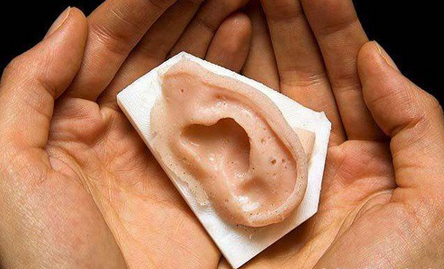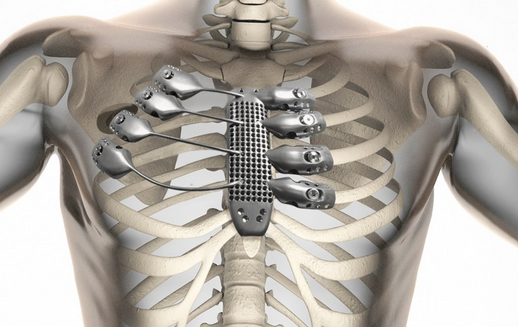3D printing technology helps regenerative medicine climb new heights
In traditional regenerative medicine, it is very difficult to achieve the replication of the three-dimensional structure of complex tissues and organs, and 3D bio-printing can almost completely replicate the microscopic and macroscopic structure of biological tissues to achieve functional regeneration. It is believed that in the near future, bioprinting will achieve better simulation of the structure, function and morphology of human tissues and organs, and push regenerative medicine to a new peak. According to a report released by FutureMarketInsights, the global 3D printed medical device market will reach $279.6 million in 2016 and a compound annual growth rate (CAGR) of 17.5% over the next 10 years. The latest analysis report of market research firm IQ4IResearch&Consultancy also pointed out that by 2022, the global medical 3D printing market will reach 3.89 billion US dollars (about 26 billion yuan). In addition, in addition to assisting medical care and manufacturing some human organs, 3D printing has great potential in providing customized and personalized medical equipment .
In addition to printing models, houses and various small items, 3D printing has attracted more attention to the living organs such as the nose and cartilage. Recently, Chinese scientists have invented a new technology that uses gold as a bio-printing ink, greatly improving the function of printing myocardial tissue.

According to Zhu Xi, the main researcher of this new technology and Zhongshan Hospital of Fudan University, the so-called "gold" is not the gold that is seen every day, but the conductive metal gold nanoparticles are incorporated into the traditional organisms with poor conductivity. In the ink. In this way, the new material can effectively improve the bioconductivity of the ink, so that the electrical signal transmission between the cardiomyocytes embedded therein is faster and more stable, thereby realizing the spontaneous and synchronous pulsation of the whole myocardial tissue.
As early as 2003, scientists replaced the ink in the inkjet printer cartridge with a cell-filled hydrogel, which enabled the first printing of live cell patterns. These cell-bearing inks are aptly called "bio-inks." By adjusting the print pattern and coordinate positioning, a specific three-dimensional structure with living cells can be printed. Over the past 10 years, bio-printing technology has made great strides, from printing methods to printing materials.

Diagnostic reagents can be divided into two categories: in vivo diagnostic reagents and in vitro diagnostic reagents. It is mostly a reagent for detection by the reaction between antigen and antibody.
A: Classification of in vitro diagnostic reagents:
1. In vitro biodiagnostic reagents managed as drugs include:
1. Blood type and tissue type reagents;
2. Microbial antigen, antibody and nucleic acid detection reagents;
3. Tumor marker reagents;
4. Immunohistochemistry and human tissue cell reagents;
5. Human genetic testing reagents;
6. Biochips;
7. Allergy diagnostic reagents.
2. In vitro reagents managed as medical devices include:
1. Clinical basic test reagents;
2. Clinical chemistry reagents;
3. Blood gas and electrolyte determination reagents;
4. Vitamin determination reagents;
5. Cell histochemical stains;
6. Autoimmune diagnostic reagents;
7. Microbiological test reagents.
B: According to medical test items, clinical diagnostic reagents can be roughly divided into clinical chemical test reagents, immunology and
Serological testing reagents, hematological and cytogenetic testing reagents, microbiological testing reagents, body fluid excretion
Detection reagents, genetic diagnosis reagents, etc. Among them, the market share of clinical chemistry
The largest, close to 34%; followed by the immunology market, accounting for about 29%. Novel immunodiagnostic reagents and genetic diagnostic tests
The reagent was developed in the late 1980s, and it is the most common diagnostic reagent for all current diagnostic reagents, regardless of technology or market.
The fastest growing product.
Urine Rapid Test Kit,Rapid Test Kit 6-Panel,Toxoplasma rapid test kits,Fecal Occult Blood Test
Jilin Sinoscience Technology Co. LTD , https://www.contoryinstruments.com